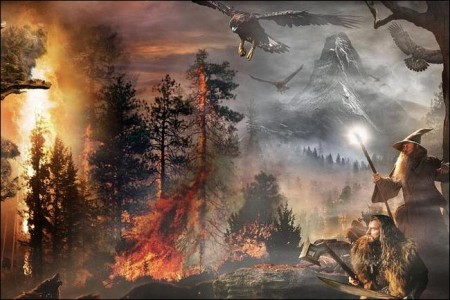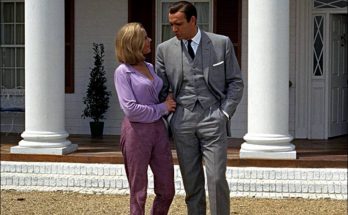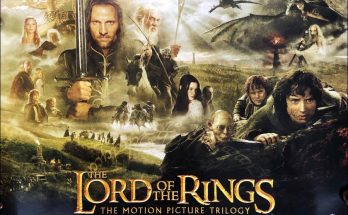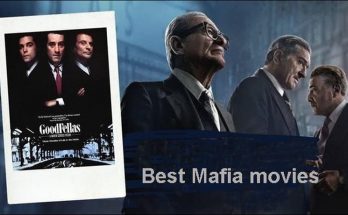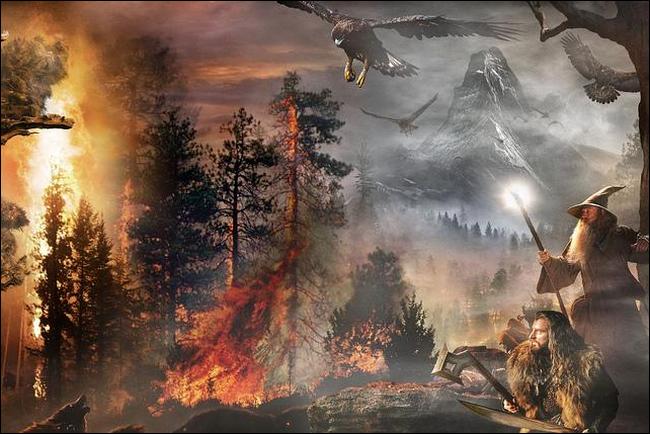The Hobbit: An unexpected journey beyond imagination. Like the films based on J.R.R. Tolkien’s The Lord of the Rings book series, this first of a prequel series is a fantasy adventure with lots of makeup and effects, as well as a nearly three-hour run time. While generally not as dark as the Rings films, there is still some intense action and disturbing images that may be too much for young children. Fans of the series and returning star Ian McKellen should be pleased though other recognizable faces from the original series have only small parts.
Creating the worlds and civilizations of Middle-earth would not have been possible without the imagination, artistry and innovation of Joe Letteri and 850-strong team at Weta Digital.
The plethora of digital creatures that would populate the film — from Trolls to Stone Giants, and from Goblins to Gollum — were all brought to life by Weta Digital. Peter Jackson would review the creatures as they developed, often suggesting further enhancements once he had seen the creatures coming to life.
“People have to relate to these characters and believe in what they are seeing, no matter how fantastical it is,” Letteri relates. “It’s often the tiny details, as well as the more obvious big things, that give the game away, so we paid meticulous attention to every detail.”
Skin, for example, had to look and behave like the genuine article. “It was important to get the texture exactly right and register the way that light reacts when shining on or through skin,” he says. “Too perfect is not natural. Natural appearance, texture and movement of hair is key.”
But the most important feature of any character, as Gollum’s otherworldly presence proves, is eyes. “They can dictate whether or not the audience can empathize with a creature,” Letteri affirms.
Movement also had to look natural. “It was all about building a physical personality,” the senior visual effects supervisor says. “Often these are things you wouldn’t consciously notice, but when they are missing you know something isn’t quite right.”
Azog, the powerful and cruel Pale Orc played by Manu Bennett, was an entirely digital character. One of the most terrifying of his kind, Azog began life on the Motion Capture (MoCap) stage, as did the three Trolls — William, Bert and Tom — with actors Peter Hambleton, Mark Hadlow, and William Kircher, respectively, doing double duty on the MoCap stage in addition to their Dwarf roles.
MoCap also played a role in the creation of the grotesque Great Goblin, played by Barry Humphries, and all of the Goblin hordes. By contrast, two of the Orcs, Yazneg (Jeff Rawls) and Fimbul (Stephen Ure), were acted in painted silicon and foam latex prosthetics designed and made by Weta Workshop, and later enhanced by Weta Digital.
The events that unfold in Goblin Town proved to be one of Letteri and his team’s most complex visual effects challenge. “You have all the Goblins moving around, but they are all individual characters,” Letteri details. “You also have a set with many levels, so there is activity and movement everywhere. One of the most interesting things is that the perspective in the caves is always changing because there is no ‘ground,’ so it creates some very dynamic shots. In scenes like this, the line between live action and visual effects is very fine.”
One of the earliest, most sophisticated digital characters ever created is Gollum, the one-time Hobbit first and unforgettably brought to life in THE LORD OF THE RINGS Trilogy by Andy Serkis. The character was a collaboration between Serkis and Weta Digital through the then-breakthrough technology of motion capture performance.
Ten years ago, the system required Serkis to act his scenes on a separate stage, and his digital performance was then merged with the live action actors in post-production. On THE HOBBIT: AN UNEXPECTED JOURNEY, Weta Digital’s MoCap team had the luxury of recording Serkis live on set, performing opposite Martin Freeman.
The enhancements Weta Digital has made to its Motion Capture pipeline allowed Serkis and Freeman to fully interact together live as they performed the lengthy “Game of Riddles” scene from beginning to end. This process gave Peter Jackson the ability to direct and frame the camera for two live actors even though a digital character would later replace one of them.
As with all Motion Capture performances, the animators took the performance data they recorded on set and translated it for use on the digital character, in this case Gollum. This also gave them the ability to animate Gollum’s spiderlike movements and ability to climb vertical surfaces that humans cannot perform.
Digital artists also brought to life supersized animals, including large and vicious packs of wolf-like Wargs, and the larger-than-life Rabbits pulling Radagast’s sleigh, among others.
To facilitate the film’s array of visual effects, a team led by visual effects supervisor Eric Saindon was on set full time collecting data for creating set extensions and the exquisite vistas of Middle-earth. This included constant monitoring and tracking, particularly of the marker information — little orange dots placed on the physical sets — that allowed accurate measurement for digital additions, including the big set extensions.
Saindon worked closely with director of photography Andrew Lesnie to ensure absolute visual cohesion between the live action and digital shots. Every element had to feel like it belonged within the same world that was built by the art department. “We basically gathered the geometric information for every scene, all the detail, color and photography, so we could accurately re-create the set and work on it, whether we were adding a digital detail, a building or a backdrop to an environment,” Saindon notes.
They also used photography to create the larger environment of Middle-earth. On location, Jackson loved the look of the skies above Hartfield, so dome shots — 360 degree shots of the sky — were taken for use throughout the film. Dramatic mountains and landscapes were also photographed for potential extended backdrops to the action.
Between Jackson’s collaboration with the visual effects crew collecting data and images on the set, and the artists using that data to help bring images to the screen, anything was possible.
The Hobbit: An Unexpected Journey
Directed by: Peter Jackson
Starring: Ian McKellen, Martin Freeman, Andy Serkis, Richard Armitage, Benedict Cumberbatch, Evangeline Lilly, Cate Blanchett, Orlando Bloom
Screenplay by: Fran Walsh, Philippa Boyens, Peter Jackson, Guillermo del Toro, J.R.R. Tolkien
Production Design by: Dan Hennah
Cinematography by: Andrew Lesnie
Film Editing by: Jabez Olssen
Costume Design by: Bob Buck, Ann Maskrey, Richard Taylor
Set Decoration by: Simon Bright, Ra Vincent
Art Direction by: Simon Bright, Brian Massey, Andy McLaren, Brad Mill
Music by: Howard Shore
MPAA Rating: PG-13 for extended sequences of intense fantasy action violence, and frightening images.
Studio: New Line Cinema
Release Date: December 14, 2012
Related Link: View the Full Production Notes for The Hobbit: An Unexpected Journey
Views: 171

